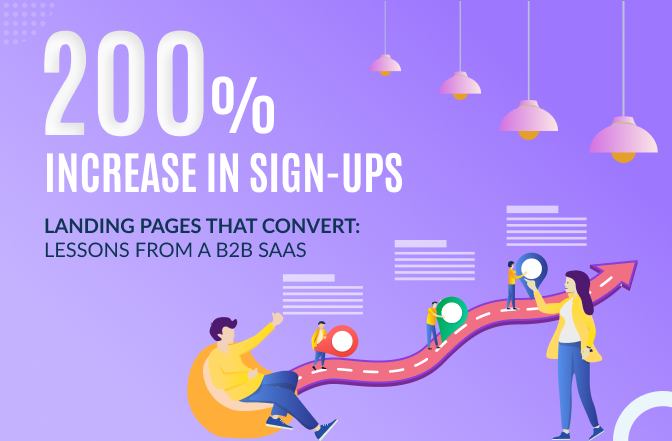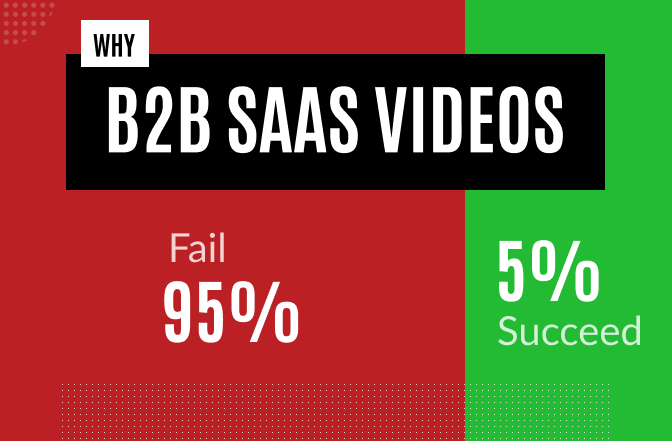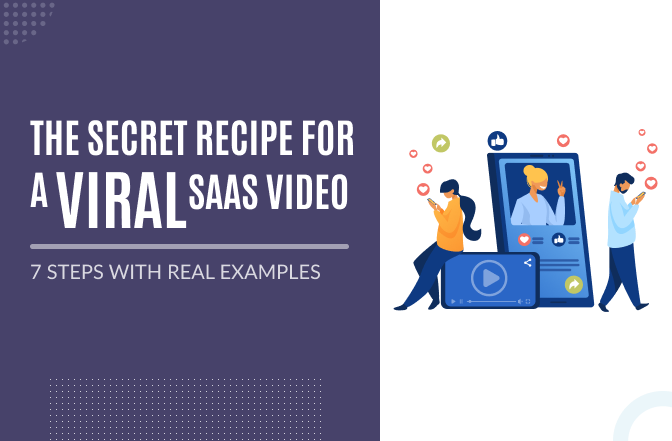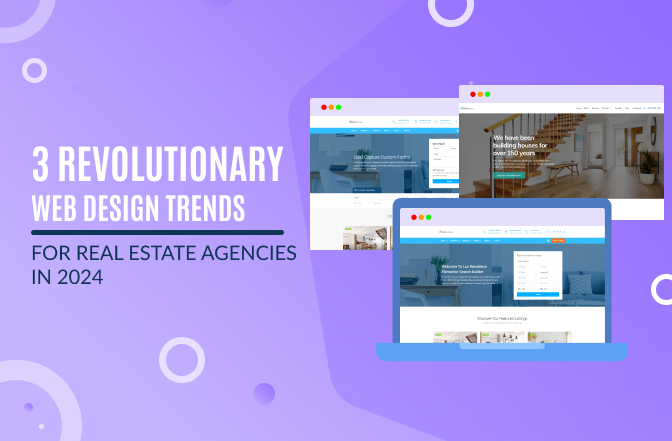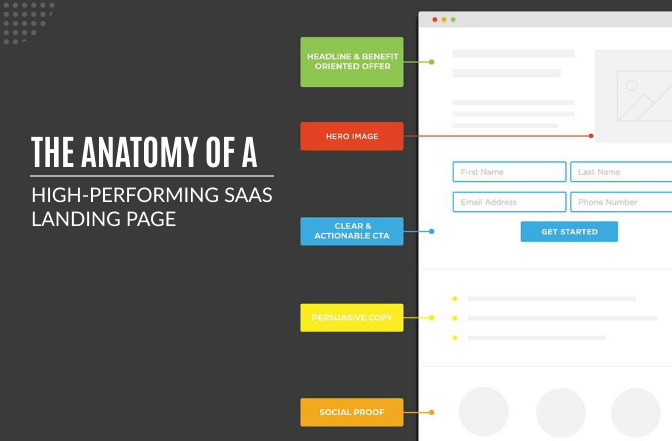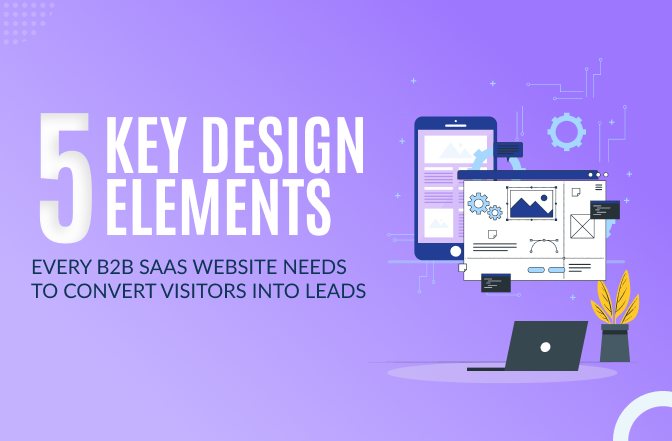In the fiercely competitive B2B SaaS landscape, every single conversion counts. But with limited marketing budgets and a constant influx of new competitors, optimizing your conversion funnel can feel like an uphill battle.
The good news? A/B testing can be your secret weapon. This data-driven approach allows you to scientifically test different variations of your website, landing pages, and marketing materials to see what resonates best with your target audience. By continuously iterating and honing your messaging, you can unlock a significant boost in conversions, just like we did.
Our Story: From Stagnant to Soaring with A/B Testing
One of our SaaS products, ai2Social, helps businesses convert their blog posts into social media posts and publish them on social media right from the WordPress dashboard. However, despite a strong value proposition, our conversion rates had plateaued. We knew we needed to improve, but traditional marketing tactics weren’t delivering the results we craved.
That’s when we embraced A/B testing. We started small, focusing on isolated elements on our landing page, and quickly saw the power of data-driven optimization.
In this article, we’ll share the actionable A/B testing strategies that helped us achieve a remarkable 30% lift in conversion rates. Here’s how you can replicate our success:
Before You Test: Building a Strong Foundation
A successful A/B testing strategy isn’t about random tweaks. It’s about systematically refining your offering based on user behavior and data insights. Here’s how to lay the groundwork:
Define Your Conversion Goals:
- The first step is to crystallize what “conversion” means for your business. Is it signing up for a free trial, requesting a demo, or subscribing to a paid plan? Aligning your team on this is crucial for measuring the effectiveness of your tests.
Identify Key Metrics:
- Once you define your conversion goals, choose relevant metrics to track your progress. Here are some examples:
- Conversion Rate: Percentage of visitors who complete your desired action (e.g., sign up for a free trial).
- Click-Through Rate (CTR): Percentage of visitors who click on a specific call to action (CTA) button.
- Bounce Rate: Percentage of visitors who leave your landing page without taking any action.
Leverage User Research:
- Don’t operate in a vacuum. Conduct user research through surveys, interviews, or user testing tools like Hotjar to understand your target audience’s pain points and preferences. This will help you formulate targeted hypotheses for your A/B tests.
Analyze Existing Data:
- Dig into your website analytics to identify areas with high drop-off rates or low engagement. This can reveal potential bottlenecks in your conversion funnel that A/B testing can address.
Crafting Your A/B Test: Isolating the Variables
Now comes the exciting part: setting up your A/B test. Here’s how to ensure your tests deliver actionable results:
- Focus on One Variable at a Time: It might be tempting to overhaul your entire landing page, but resist the urge. A/B testing is most effective when you isolate a single variable for each test. This could be a headline, button text, form layout, pricing structure, or even the hero image. By isolating variables, you can pinpoint exactly what’s driving a change in conversions.
Formulate a Clear Hypothesis:
- Every A/B test should be based on a well-defined hypothesis. This is a prediction about how changing a specific element will impact your conversion rate. User research and data analysis should inform your hypothesis.
For example, your hypothesis might be: “We believe that changing the headline to be more benefit-oriented will lead to a higher conversion rate.”
- Create Distinct Variations: Don’t make subtle changes that users might not even notice. Ensure your variations are different enough to have a measurable impact. Remember, you’re not just testing; you’re learning which version resonates best with your audience.
Running the Test: Gathering Data and Making Informed Decisions
With your test set up, it’s time to gather valuable data:
Choose an A/B Testing Tool:
- There are numerous A/B testing tools available, with some built-in to marketing automation platforms or website builders. Select a tool that integrates seamlessly with your existing setup and offers the features you need, such as traffic splitting, user segmentation, and statistical analysis.
Segment Your Audience (Considerably):
- Segmenting your audience for the test can yield more targeted results. This allows you to tailor your messaging and variations based on demographics, behavior, or interests. For instance, you might test different headlines for decision-makers versus technical users.
- Don’t expect overnight results. Determine a realistic timeframe for the test to run, ensuring you gather a statistically significant sample size. Most A/B testing tools provide guidance on this based on your website traffic and desired confidence level. Generally, you want enough data to ensure the winning variation isn’t just a fluke.
Monitor and Analyze Results:
- Keep a close eye on your A/B test throughout its duration. Tools typically provide real-time data so you can track trends and identify early signs of a winner. However, avoid making hasty decisions. Let the test run until it reaches statistical significance, meaning the results are unlikely due to chance.
Look Beyond Conversion Rate:
- While conversion rate is a key metric, don’t get tunnel vision. Analyze how the variations impact other user behaviors, such as time spent on page, scroll depth, or form completion rates. This holistic view can reveal valuable insights into user engagement.
Taking Action and Continuous Improvement
Once your test reaches statistical significance, it’s time to make data-driven decisions:
- Implement the Winner (or Learn and Iterate):
If one variation emerged as the clear winner, integrate it into your website or landing page. Celebrate the win, but remember, A/B testing is an ongoing process.
- Analyze Inconclusive Results:
If the test wasn’t conclusive, don’t despair. Use the learnings to refine your hypothesis and design a new iteration. Perhaps the variations weren’t distinct enough, or the test didn’t run long enough.
- Continual A/B Testing is Key:
The beauty of A/B testing is it allows for continuous improvement. Identify new areas for optimization based on user behavior and data insights. Here are some additional elements you can test:
- Value proposition headlines
- Call to action (CTA) buttons
- Form length and design
- Pricing tables and structures
- Website copy and visuals
- Landing page layouts
By implementing a culture of A/B testing and data-driven decision-making, you can continuously refine your SaaS offering to resonate better with your target audience. Remember, even small improvements in conversion rate can translate to significant growth over time.
Bonus Tip: A/B Testing for Mobile
Don’t forget about the mobile experience! Since a significant portion of your traffic likely comes from mobile devices, ensure you’re A/B testing elements specific to the mobile experience. This could include button sizes, form layouts, and mobile-specific CTAs.
Conclusion: A/B Testing – Your Path to B2B SaaS Conversion Success
A/B testing isn’t magic, but it’s a powerful tool that can unlock significant improvements in your B2B SaaS conversion rates. By following these actionable steps, you can transform hunches into data-driven decisions, optimize your user experience, and ultimately achieve sustainable growth. Remember, the key lies in starting small, focusing on isolated variables, and continuously iterating based on user data. So, what are you waiting for? Start A/B testing today and watch your B2B SaaS conversions soar! And, if you want us to set an effective A/B testing for your website, contact us!


